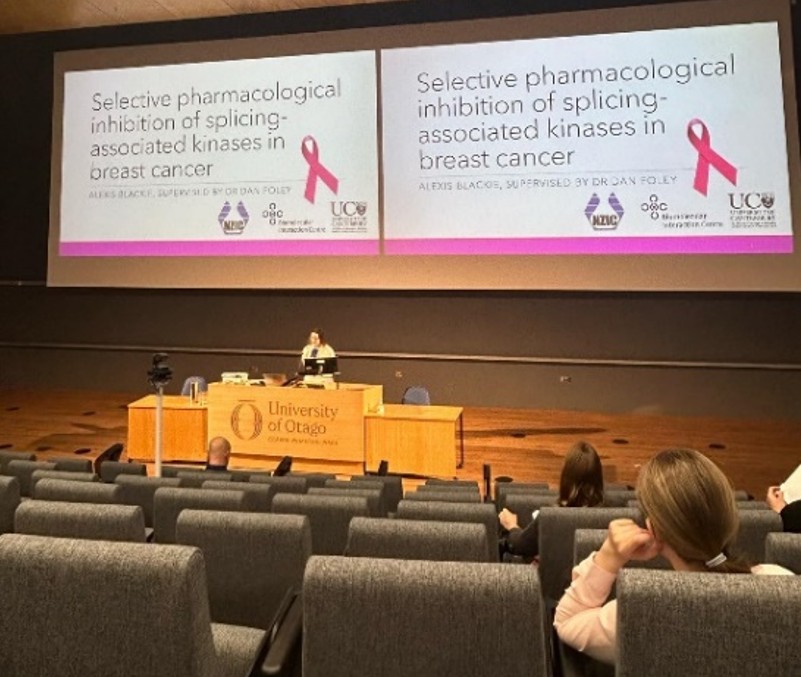Article first published in Chemistry in New Zealand Vol. 82, No. 4, Oct. 2018, 178-180
Introduction
Gin and tonic (G & T) is a wonderful concoction of plant alkaloids (including quinine and juniper berry extracts), fizzing aqueous carbon dioxide, ethanol, citric acid and ice. It is prepared by mixing gin (an ethanolic extract distillate of juniper and herbs) with tonic water (saturated CO2 (aq) containing quinine and sucrose) in an approx. 1:2 ratio, and served over ice with a slice of lime (or lemon). It has a pronounced soothing effect and a moreish flavour.
I have used G & T to illustrate my 100-level chemistry lectures on water, acids, bases and buffers for some 5 years - much to the amusement and, I hope, learning of my students. In this article, I will set the infamous G & T in the context of 100-level chemistry teaching and learning. But before I do this, I will introduce the basic components of a G & T – gin and tonic water.
Gin
The origins of gin are uncertain, but it was mentioned as “genever” in The Duke of Milan, a play written in 1623 by Philip Massinger. It almost certainly goes back further than this; indeed it is reputed that the English troops who provided support to the Dutch against the Spanish in Antwerp in 1585 used gin to calm their nerves before battle – hence the phrase Dutch courage. Still further back, there is a reference to genever in Den Naturen Bloeme (The Natures Floral) written ca. 1350 by Jacob van Maerlant. Genever was known in the English-speaking world as Dutch gin or Hollands, but now of course we simply call it gin.1
In a far-reaching (indeed literally universal) literary context, Douglas Adams in his novel, The Restaurant at the End of the Universe noted that ‘85% of all known worlds in the Galaxy, be they primitive or highly advanced, have invented a drink called jynnan tonnyx, or gee-N'N-T'N-ix, or jinond-o-nicks…”.2 Adams’ gee-N'N-T'N-ix are quite different in composition to our worldly G & T, but the concept clearly spans galaxies.
Gin is manufactured by twice distilling malt spirit (ethanol produced by fermenting part-germinated wheat which enzymically liberates maltose from starch) with juniper (Juniperus communis) berry (actually modified cones) and herb mixtures; e.g., caraway (Carum carvi), coriander (Corinadrum sativum), anise (Pimpinella anisum) that give different gins their flavour characteristics. The predominant and very characteristic flavour and scent of gin is from the juniper berries which contain essential oils comprising α- and β-pinene, sabinene, terpinene-4-ol, borneol and geraniol (Fig. 1) all of which contribute to gin’s flavour and aroma.
Interestingly the individual flavour components of juniper berries are also present in other coniferous trees. Pinene (as its name suggests) is a key component of pine and is responsible for the characteristic smell of a pine forest; geraniol is responsible in part for the sweet scent of roses; borneol is present in the spice galangal (Alpinia officinarum) and the anal sacks of the North American beaver (Castor canadensis) and is thought to play an important role in beaver scent recognition; sabinene is found in Norway spruce (Picea abies) and contributes to the evocative scent of Christmas trees; and terpinen-4-ol is found in nutmeg and tea tree (Melaleuca alternifolia) oil. It is the unique combination of these essential oils that adds up to the very characteristic aroma of juniper berries, and their solubility in ethanol accounts for the flavour and enticing aroma of gin.

Tonic water
The origins of tonic water lie in the malaria prophylactic use of its key component, quinine (Fig. 2), extracted from the bark of cinchona trees (e.g. Cinchona officinalis). The original tonic waters were used by the British stationed in Africa (and other tropical countries) to protect them from malaria parasites (e.g. Plasmodium falciparum) transmitted by mosquitos (e.g. Anopheles gambiae). These tonic waters contained high quinine concentrations which gave them a characteristic and very unpleasant bitter taste. A quinine dose of 10 mg/kg body weight every 8 h is necessary for effective malaria prophylaxis.3 Therefore, for a 70 kg human a dose of 700 mg every 8 h would be required. Assuming approximately 200 mL of tonic water is used to make a G & T, this would mean that the quinine concentration in the tonic water would need to be 3.5 mg/mL and a G & T taken every 8 h for effective malaria control. A quinine concentration of 3.5 mg/mL is intensely bitter – the taste threshold for quinine is 0.008 mM,4 which is equivalent to 1.14 mg/mL.

Fig. 2. Quinine is a weak base; Kb1 = 3.3 x 10-6, Kb2 = 1.1 x 10-9 (Kbs calculated from http://www.science.uwaterloo.ca/~cchieh/cact/tools/pkb.html ). Acid moves the equilibrium towards the protonated quinine ion, base moves the equilibrium toward neutral quinine. This is why quinine is absorbed well in the basic environment of the duodenum and small intestine.
Tonic water was used as an essential malaria prophylactic by the British in the early days of the British Raj (1858-1947). The ingenuity of the early colonists led to the awful taste of tonic water being made more palatable by mixing it with gin – the G & T was born!
As the G & T evolved, tonic waters were manufactured with lower quinine concentrations to reduce the intense and unacceptable bitterness to a pleasurable level. Indeed, the USA Food and Drug Administration now limits quinine in tonic water to 83 ppm on toxicological grounds.5 This equates to 0.083 mg/mL and is the level that makes a G & T taste good too.
Where in the digestive system is quinine absorbed?
Quinine is a weak base and, therefore, exists as the dication in the acid conditions of the stomach (Fig. 3) and thus is not readily absorbed into gastric cells because it cannot readily traverse the hydrophobic lipid-based cell membrane. This means that quinine’s uptake from the stomach is minimal. However, basification (and buffering) by bile of the stomach contents on release into the duodenum (Fig. 3) de-protonates quinine ions making the neutral quinine well absorbed in the small intestine.6 Bile contains a complex mixture of liver metabolites including bilirubin, cholesterol, fatty acids, inorganic salts and cholic acid and its derivatives (e.g. taurocholic acid) and their conjugate bases which are responsible for bile’s acid neutralising and buffering properties - the pH of the duodenal and the upper small intestine contents is 7-8; this deprotonates quinine, removing its positive charge and facilitating absorption across the duodenal and upper intestinal mucosa.

Why does G & T fizz?
The fizz of tonic water is made by pressure-assisted solubility of carbon dioxide in an aqueous solution of sucrose and quinine. Carbon dioxide forms carbonic acid in aqueous solution which is a diprotic acid and dissociates to produce a hydrogen carbonate (bicarbonate) ion which further dissociates to form a carbonate ion (Fig. 4). When lime or lemon juice containing citric acid (a triprotic acid) is squirted into a G & T, or a slice of lime or lemon is dropped in, the drink fizzes because the hydrogen ions introduced into the solution when the citric acid deprotonates push the carbonic acid/hydrogen carbonate/carbonate equilibrium to the left which releases carbon dioxide gas (Fig. 4).

Fig. 4. Bottom: Reaction of carbon dioxide (CO2) with water (H2O) to form carbonic acid (H2CO3) which dissociates to form hydrogen carbonate (HCO3-) and a hydronium ion (H3O+) where Ka1 = 4.46 x 10-7. The HCO3- further dissociates to liberate another H3O+ and carbonate (CO32-) where Ka2 = 4.68 x 10-11. Top: triprotic citric acid dissociates to form citrate and three H3O+s where Ka1 = 7.5 x 10-4, Ka2 = 1.7 x 10-5 and Ka3 = 4.0 x 10-7. The three H3O+s push the H2CO3 acid dissociation equilibrium to the left liberating CO2 (g) which is why a G & T fizzes when lime or lemon is added.
Why does ice float on a G & T?
Water molecules are polar due to the electronegativity of oxygen and form intermolecular hydrogen bonds (H-bonds) between the δ- oxygen of one water molecule and a δ+ hydrogen of another water molecule (Fig. 5). The three states of water are determined by the degree of hydrogen bonding between water molecules. In solid water (ice; ≤ 0°C, at p = 1 bar) the maximum number of H-bonds holding the water molecules together creates a crystal lattice (Fig. 5); this open array lattice means that the water molecules are slightly further apart than they might be in liquid water where there is no crystal lattice and so the water molecules can pack together optimally (i.e. more water molecules per unit volume). In liquid water (>0°C≤100°C) there are fewer hydrogen bonds and greater kinetic energy than ice – as the temperature rises kinetic energy increases and the number of H-bonds decreases; in water vapour (≥100°C) there are very few if any H-bonds and high kinetic energy. As a result of this, the density of ice is 0.92 g/mL at 0°C and the density of liquid water at 4°C is 1 g/mL which means that ice floats on water.

The situation in a G & T is different because the liquid is ethanol (aq.) not water. Gin contains approx. 35-40% (aq.) ethanol,7 and a good G & T contains approx. 30% v/v gin; this means that a G & T is approx. 13% ethanol. The density of 13% ethanol (aq.) is 0.98 g/mL at 20°C8 and since the density of ice is 0.92 g/mL it still floats on a G & T.
Why does G & T freeze below 0°C?
Ethanol forms H-bonds with water molecules (Fig. 6) and between ethanol molecules which disrupts water-water H-bonds. This means that the freezing point of ethanol (aq.) is lower than the freezing point of water; indeed gin (40% v/v ethanol (aq.)) freezes at approx. -30°C9 and 13% v/v ethanol (aq.) (= 10.3% w/v based on ethanol density = 0.789 g/mL; i.e. the concentration of ethanol in G & T) freezes at -5°C. Ethanol depresses the freezing point of water because it interferes with water-water hydrogen bond formation so inhibiting the formation of the ice crystal lattice.

In conclusion…
The simple G & T is a cornucopia of chemistry including hydrogen bonding between water molecules and the interference of ethanol, acid base chemistry of quinine and carbonic acid/hydrogen carbonate/carbonate systems and triprotic citric acid. It is this chemistry that underpins the pH-dependent absorption of quinine in the digestive system, the enticing fizz when a slice of lime or lemon is added to a G & T, and the lip-cooling ice floating on the surface. And all of this makes a nice story for this quirky academic to enhance his teaching of 100-level acids, bases, buffers and water chemistry…cheers!
Acknowledgements
I thank Professor Bryce Williamson for his G & T enthusiasm which added significantly to the content of this article, and I offer my heartfelt thanks to those students who came to my CHEM 111 lectures at the University of Canterbury over the last 5 years – I raise a glass to you all!
References
1. Van Acker-Beittel, V.; Genever: 500 Years of History in a Bottle, Flemish Lion, 2014.
2. Adams, D.; The Restaurant at the End of the Universe, Del Rey Books, 2004.
3. Achan, J. Malaria J. 2011, 10, 1–12.
4. Purves, D.; Augustine, G. J.; Fitzpatrick, D.; Katz, L. C.; LaMantia, A-S.; McNamara, J. O.; Williams, S. M. (Eds.) Neuroscience, Chapter 15, The Chemical Senses, 2001.
5. Code of Federal Regulations, 21, Ch. 1, §172.572, 2008.
6. Hebden, J. M.; Wilson, C.G.; Spiller, R. C.; Gilchrist, P.J.; Blackshaw, E.; Frier, M.E.; Perkins, A.C. Pharm. Res. 1999, 16, 1087-92.
7. Puckette, M. Alcohol Content in Wine and Other Drinks. See: https://winefolly.com/tutorial/alcohol-content-in-wine/ (accessed 11/06/2018).
8. Density and concentration calculator for mixtures of ethanol and water at 20°C: http://www.handymath.com/cgi-bin/ethanolwater3.cgi?submit=Entry (accessed 11/06/2018).
9. Welch, S. What is the freezing point of alcohol? See: https://www.quora.com/What-is-the-freezing-point-of-alcohol (accessed 11/06/2018).

2.jpeg)



